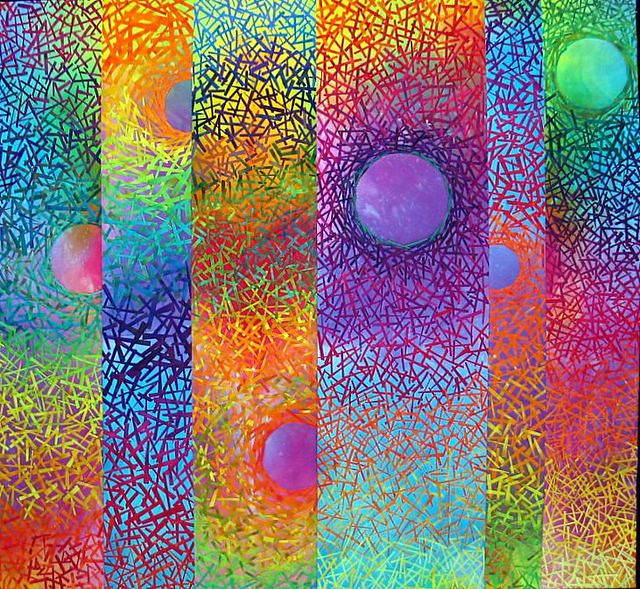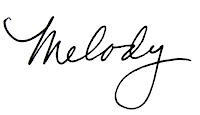Hi Melody,
I have a burning question about the fusing on your Matchstick pieces.
I've done a bit of fused applique but I've always stitched the pieces down to stop them peeling off the quilt later. I find the stitching causes unsightly fraying though.
Am I right in my assumption that you just fuse with no sewing? If so, do you use a special, extra strong fusible? I imagine it would require particular care when packing to send to shows etc.
Cheers
Claire
Dear Claire,
I use only regular Wonder-Under as my fusible. I only use hand dyed fabrics and that is why I am able to leave my edges free of stitching. Commercial fabrics have a factory applied coating like Perma-Press or Wash and Wear, or some such name, which acts like Teflon to the fusible. It peels up eventually or sooner. Hand dyed fabric (cotton or silk) has no such factory finish so the fine fibers of the fabric are open to receive the fusible web and will remain fused until you try to scrape them off with your fingernails. Please do not test this on my quilts! heehee.
I have had very good success over the 10 to 12 years that I have been making fused designs. Years ago when I showed my art quilt group Matchstick Moons, I notiiced that a few slivershad lifted and when I got home I re-fused them with a pressing cloth and hot iron. I did rush out without that final pressing since I was just then finished applying the 10 zillionth matchstick.

One more thing. I apply the Wonder-Under with a hot dry iron, ironing as though I were just trying to smooth out the wrinkles on a piece of fabric. Then I let the paper/fabric cool and then I peel off the paper. This is the big secret. I NEVER CUT THE FABRIC WITH THE PAPER STILL ATTACHED. I use very sharp scissors or rotary cutters to cut my designs. I feel that I am drawing my shapes with the cutting.
That way I needn't peel the paper off which causes fraying. The paper is saved and is referred to below as release paper.
I am not against fraying. Fraying distinguishes fabric from paper. If your fabric frays then make it really fray and make that a part of your artistic statement.
Commercial fabrics can be fused, but need to be either quilted down or edge stitched in order to safely remain attached.
I also am aware that some hand dyed fabric such as heavier cottons or cottons with different weaves such as jaquards or twills will fray considerably even if I am very careful with my cuts. I love the look of sateen, but find that the twill weave is quite frayable. So I use silk instead, which give a good sheen and shows off the quilting nicely.
Since I fuse my fabrics together without using a base fabric, the trick is to use the release paper as a construction base. Using two fused fabrics, overlapping the edges just enough, say 1/8th inch, will produce a 'seam'. The release paper is reusable over and over again, until it gets dry and crackly. Then I will resort to using the teflon pressing sheets.
When the quilt top is complete I will fuse it directly to the batting. I only use Hobbs Heirloom Cotton 80/20 (Mr. Hobbs, this is a plug. How about sending me some free batting?) because it has a very smooth and nice finish and won't show on the top, especially with the fused silk.
I don't recommend using this method with Warm and Natural or White and Natural or other batts that have a noticeable texture. Disaster will result.
2. Iron the fusible with a hot dry iron, moving the iron as though you were just ironing out the wrinkles.
3. Trim off the fabric selvedges or any fabric that isn't covered by the fusible web, unless you want to go back and patch that part later.
4. Pay close attention to fusing the corners, as they are the place one first peels off the paper. If the fusible isn't sticking to the fabric, then iron it again.
5. Bubbles may appear on the right side of the fabric but will disappear when they are fused after the paper is removed. Sometimes spots may be left, missing some of the fusible. Just patch the spot with another small piece of Wonder-Under. Make sure to cover the area being patched with the release paper so that nothing gets on your iron!
For more Q&A on Fusing see this post, http://fibermania.blogspot.com/2005/12/qa.html.









I LOVE that 2nd picture of your fabric! The colors make me drool!!!
ReplyDeleteMelody- would you recommend washing the commercial cottons (like the classic cottons solids you suggested in the earlier post) before fusing? Does this help with the adherance of the Wonder Under to the fabric? Thank you for offering this Quilt As You Go project for February. -sandi from chattanooga
ReplyDeleteSandi, It couldn't hurt to prewash your Cotton Classics, before fusing.
ReplyDeleteYou've really explained a lot for me about fusing. I wish I could do one with you but,I've already got my finger in too many pies. What is it about we quilters. WE just can't stop ourselves!
ReplyDeleteI will enjoy following though.
Melody, thankyou again for providing these instructions/hints on fusing. No matter how many times i have read through your previous posts, I still get a little extra out of each reading- bits come together in my mind and it all makes more sense! Looking forward to seeing your February project.
ReplyDeleteI really like looking through an article that will make men
ReplyDeleteand women think. Also, thanks for permitting
me to comment!
Feel free to surf to my homepage: cash for silver
Hey there, I just wanted to see if you ever have had any trouble with hackers?
ReplyDeleteMy last wordpress blog at http://fibermania.blogspot.
com/ was hacked and I ended up losing seven
months of hard work due to no back up. Do you have any solutions to stop intrudersI
have to ask though, but where exactly did you obtain your blog template:
did you come across it anywhere or did you design it yourself?
With a theme like the one you have, my blog could really stand out more.
Kindly tell me the place where you obtained your theme.
Check out my blog post www.vwc.edu
Do you mind if I cite a few of your posts as long as
ReplyDeleteI give credit and sources back to blogger.com? My blog is in the exact same niche as your own and my readers could certainly benefit from a lot of the info you offer here.
Feel free to let me know if this is okay with you.
Regards
Here is my site Nordovest
thank you so much for this - it is very generous of you to share your techniques.
ReplyDeleteI appreciate learning about different fusing techniques.
ReplyDelete